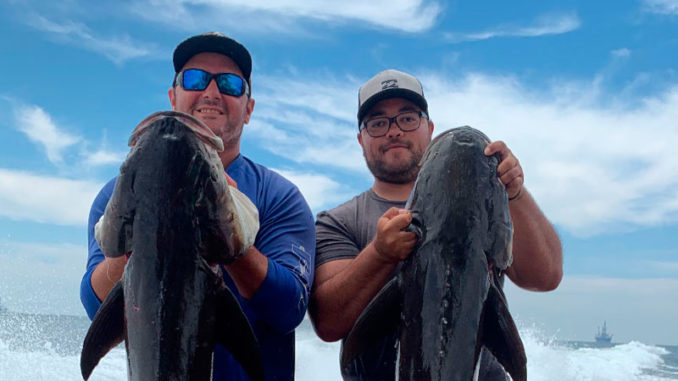
Capt. Chris Mowad of Whoo Dat Sportfishing has been fishing for most of his life, starting his career in Pensacola, Fla. He’s adjusted from king-mackerel fishing in Florida to targeting cobia in Grand Isle, along with various pelagic fish.
“In November, there are a lot more fish around,” he said, “not quite as big as earlier in the year, though. The average cobia caught is usually about 30 to 40 inches. That’s why you should scale down the hook and tackle size, to adjust for the catch. Other than that, cobia fishing this time of year is no different than any other time of the year when the cobia are around.
“A few of the locals will say that cobia fishing doesn’t get good until July or August. We started catching good sized fish in May. Our first 10 fish were over 50 pounds. It’s been a decent year for cobia, and November shouldn’t be all that different from earlier in the year aside from the size of the fish that will be caught.”
Where to look
Mowad said he’s had luck around the Grand Isle 40s, 20s; drill ships, the upcurrent sides near the anchor chains and the satellite platforms near the west Timbalier Block.

“We’ll be hitting those throughout the fall, and we expect to find cobia still there,” he said. “It’s going to be the same for any structure off Fourchon and Cocodrie. They will have cobia, too.
“What I have found, is that cobia will be in similar water depths, usually along the range of more than 60 feet but less than 120 feet. The magic number is usually 80-90 feet.”
What to look for
Mowad said cobia like greener water better than the murkier inshore water.
“Crossing over the tide line may produce more fish,” he said. “Just make sure that the weather is right for doing that.
“If the conditions are perfect — a southeast swell, sunny weather, and not too choppy — you could see the cobia swimming on top. But this won’t always be the case every time you are on the water.”
Necessary tackle, bait
“Cobia like sticking together,” Mowad said. “That’s where having the extra rods rigged up, ready to toss out, comes in handy. It’s best to be prepared and expecting it.
“I always have several rods rigged up with a Carolina rig, 60- pound fluorocarbon leaders, 7/0 to 8/0 hooks, and a 4- to 6- ounce lead weight. I keep a few other rods rigged with a free-line leader ready, too. Once that first cobia is hooked, another one will usually follow him up. You’ve got to be ready for that.

“As for bait, live bait and even whole squid work. Pinfish are my favorite live bait. Croaker are decent, but they’re hard to come by right now.
“If you want to stick with artificial lures, bucktails are good for covering a lot of ground. I use them to locate the cobia when going from rig to rig.”
Tips to remember
Mowad said part of successfully targeting cobia involves figuring out the current.
“The main key to remember is to stay on the upcurrent side of whatever structure you are fishing,” he said. “If you see a cobia swimming around structure and he disappears, throw dome chum in the water. He will come back up. You don’t always have to chum for them, but it helps.”